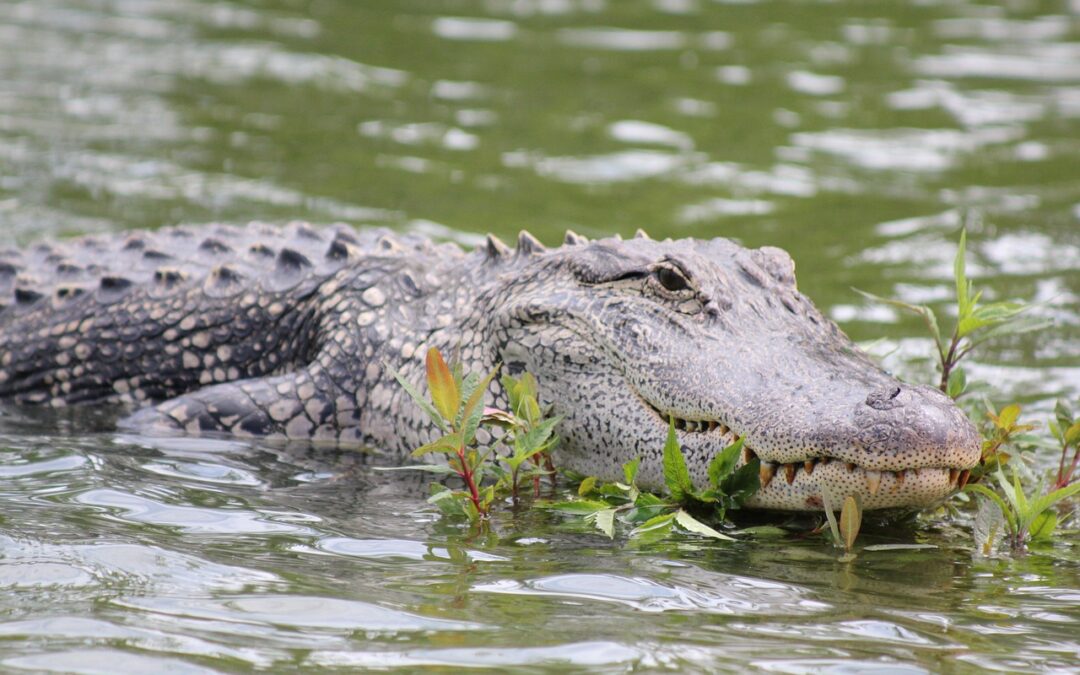At Grape Hammock in Florida, you might notice bubbles rising to the water’s surface. As the bubbles break, a green nose and two eyes may emerge—it’s an alligator coming up for a breath! These fascinating creatures have incredible adaptations for breathing and surviving in their watery habitat.
How Long Can Alligators Hold Their Breath?
Alligators can hold their breath underwater for quite some time. On average, they stay submerged for about 15 to 20 minutes. Larger adult alligators can remain underwater for up to 45 minutes. This ability is crucial for their hunting and survival. In colder water, their metabolism slows, conserving energy and allowing them to extend their breath-holding time. In such conditions, alligators can stay underwater for several hours and, in rare cases, up to 24 hours. This amazing adaptation helps them approach prey stealthily and avoid threats.
Can Alligators Breathe Underwater?
Alligators, like all reptiles, cannot breathe underwater as they lack gills. Instead, they breathe air using lungs, just like humans. However, despite this limitation, alligators are excellent swimmers. Their bodies are designed for efficient diving and maneuvering in the water. They have developed several physiological adaptations that allow them to hold their breath for extended periods.
How Do Alligators Hold Their Breath for So Long?
Alligators can hold their breath for long periods thanks to several unique adaptations. One key factor is their ability to slow their metabolism while underwater, reducing their need for oxygen. This metabolic rate decrease is even more pronounced in cooler water, enabling them to stay submerged for extended periods.
Additionally, alligators have a highly efficient cardiovascular system that allows them to regulate blood flow to prioritize essential organs like the brain and heart. This ensures that these critical areas receive enough oxygen during long dives. Alligators can also slow their heart rate to as low as 2 or 3 beats per minute, conserving oxygen.
Their lungs are specialized for optimal oxygen absorption. Unlike mammalian lungs, which have a bidirectional airflow system, alligator lungs use unidirectional airflow. This means air flows in a single direction through the lungs, maximizing oxygen exchange efficiency.
For very long dives, alligators can also use anaerobic respiration, allowing them to generate energy without oxygen. These adaptations make alligators effective and stealthy predators, capable of staying hidden and striking swiftly.
Can Alligators Drown?
Despite their impressive breath-holding abilities, alligators can still drown. They need to surface regularly to breathe. If an alligator becomes trapped or entangled in something like a fishing net, it might be unable to reach the surface and could drown. This underscores the importance of protecting their habitats and promoting environmental conservation.
Visit Grape Hammock
For those eager to see these incredible creatures in their natural habitat, Grape Hammock offers a unique opportunity. Take an exciting airboat ride to observe alligators and other wildlife in their natural environment. After your airboat adventure, visit Lake Kissimmee to get up close with some of our most famous alligators during an interactive animal encounter.
Experience the wild side of Florida and witness firsthand the unique adaptations that make alligators such formidable creatures. Don’t miss this chance to explore the fascinating world of alligators at Grape Hammock—an adventure that promises unforgettable memories!
Our Service Area: Lake Wales, Serbing, Frostproof, Dundee, Bartow, Babson Park, Haines City, Cypress Gardens, Lake Kissimmee, Avon Park, Highland Park, Davenport


